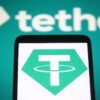
In the world of cryptocurrencies, stablecoins play a crucial role by providing stability and reducing volatility. Two of the most prominent stablecoins are USD Coin (USDC) and Tether (USDT). Both aim to maintain a stable value by pegging their value to the US dollar, but they differ in several key aspects. This article explores the similarities and differences between USDC and USDT, helping you understand how they compare and which might be more suitable for your needs.
What is USD Coin (USDC)?
USD Coin (USDC) is a stablecoin launched in 2018 by the Centre Consortium, which was founded by Circle and Coinbase. USDC is built on the Ethereum blockchain and adheres to the ERC-20 token standard. It aims to maintain a 1:1 value ratio with the US dollar, with each USDC token backed by an equivalent amount of US dollars held in reserve. Regular third-party audits are conducted to ensure the transparency and reliability of the reserve.
What is Tether (USDT)?
Tether (USDT) is one of the earliest and most widely used stablecoins, launched in 2014. Originally issued on the Bitcoin blockchain via the Omni Layer, USDT has since expanded to various blockchains, including Ethereum (as an ERC-20 token), Tron (as a TRC-20 token), and others. Like USDC, Tether aims to maintain a 1:1 value with the US dollar, with the value of each USDT token backed by fiat currency reserves. However, Tether has faced scrutiny regarding the transparency and adequacy of its reserves.
Key Differences Between USDC and USDT
- Transparency and Audits:
- USDC: Known for its commitment to transparency, USDC undergoes regular third-party audits to verify that each token is backed by a corresponding US dollar held in reserve. This practice helps build trust among users and ensures the stability of USDC.
- USDT: Tether has faced criticism and legal challenges over the years regarding the transparency and sufficiency of its reserves. Although Tether claims that its tokens are fully backed by reserves, the details and frequency of its audits have been a point of contention.
- Regulatory Compliance:
- USDC: Issued by regulated entities, USDC adheres to financial regulations and standards. This regulatory compliance helps ensure that USDC operates within legal frameworks, making it a secure choice for users.
- USDT: Tether has encountered regulatory scrutiny and legal issues related to its reserve claims and financial practices. While it remains widely used, the regulatory environment for Tether has been less clear compared to USDC.
- Market Adoption:
- USDC: Although newer, USDC has quickly gained traction and is integrated into various financial products and services, including exchanges, DeFi platforms, and lending services. Its adoption continues to grow as more institutions and platforms recognize its reliability.
- USDT: Tether is one of the most widely adopted stablecoins, with a significant presence across numerous exchanges and platforms. Its long-standing history and broad acceptance make it a dominant player in the stablecoin market.
- Blockchain Integration:
- USDC: Primarily issued on the Ethereum blockchain as an ERC-20 token, USDC is also available on other blockchains like Algorand and Solana, offering flexibility in its use and integration.
- USDT: Tether is available on multiple blockchains, including Ethereum (ERC-20), Tron (TRC-20), and Bitcoin (Omni Layer). This multi-chain presence provides users with various options for transactions and storage.
- Liquidity:
- USDC: As a widely used stablecoin, USDC offers high liquidity, making it easy to trade and convert into other digital assets or fiat currencies.
- USDT: Tether also enjoys high liquidity and is commonly used across exchanges and financial platforms, providing ample opportunities for trading and conversion.
Conclusion
Both USD Coin (USDC) and Tether (USDT) serve as vital stablecoins in the cryptocurrency ecosystem, providing stability and liquidity in a volatile market. While USDC is known for its transparency and regulatory compliance, Tether has established itself as a long-standing and widely adopted stablecoin. Understanding the differences between these two stablecoins can help you make informed decisions based on your preferences for transparency, regulatory adherence, and market integration.












